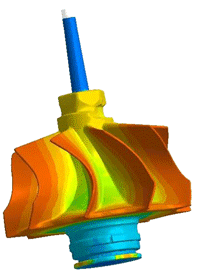When it comes to the injection moulding process, the Metal Injection Molding industry can rely on the vast experience and technical background of the plastics injection moulding industry.
Leading manufacturers of injection moulding machines offer comprehensive PIM-related technical support, and some even have dedicated PIM facilities to help get you started.
Standard plastic injection moulding machines typically have to undergo some minor modifications to optimise them for Metal Injection Molding. The injection cylinders, for example, are adapted for the particularly abrasive properties of the materials used.
The selection of the screw geometry is also important – compared to a standard thermoplastic screw, a lower compression rate, typically 1.4:1 to 1.6:1 is used, along with screw material with enhanced wear resistance. Another modification is an extended compression zone. Such modifications allow lower shear heating and, therefore, reduce wear.
As well as injection moulding machines, there are many experienced third-party mould makers available, as well as mould design software, parts handling devices, etc.

Simulation of the injection moulding of an turbocharger component
Computer simulation of the injection moulding process is advanced and allows the study of every detail of mould filling in 3D.
The design engineer can analyse the filling dynamics in thick and thin areas on screen, study the effects of gate position, thermal gradients in the mould and phenomena such as jetting and binder segregation.
Designers can also optimise the kinetics of mould filling and determine shrinkage and distortion of the green compact relative to the mould dimensions.
A careful analysis and optimisation of the mould cavities can reduce design time and cost while significantly improving yield and quality.
Contact: Cindy Wang
Phone: +86 19916725892
Tel: 0512-55128901
Email: [email protected]
Add: No.6 Huxiang Road, Kunshan development Zone, JiangsuShanghai Branch: No. 398 Guiyang Rd, Yangpu District, Shanghai, China